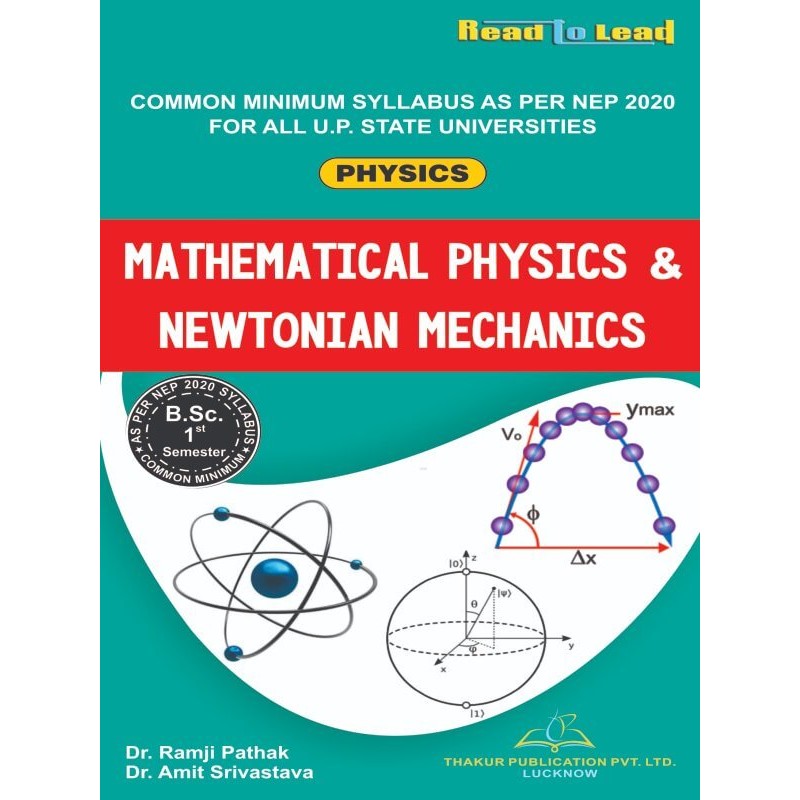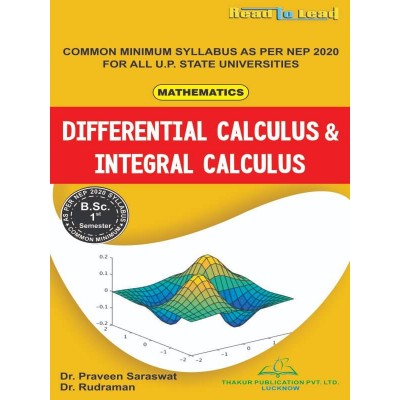Categories
- Pharmacy
-
Nursing
-
MBA
-
BBA
- U.P. State University
- Veer Bahadur Singh Purvanchal University, Jaunpur
- Chaudhary Charan Singh University, Meerut
- Dr. Bhimrao Ambedkar University, Agra
- Chhatrapati Shahu Ji Maharaj University, Kanpur
- Mahatma Jyotiba Phule Rohilkhand University, Bareilly
- Mahatma Gandhi Kashi Vidyapith, Varanasi
- Dr. Ram Manohar Lohia Avadh University, Ayodhya
- Deen Dayal Upadhyaya Gorakhpur University
- Prof. Rajendra Singh (Rajju Bhaiya) University, Prayagraj
-
BCA
- UP State Universities
- University of Pune
- I.K.Gujral Punjab Technical University (PTU)
- University of Rajasthan
- Rashtrasant Tukadoji Maharaj Nagpur University
- Uttar Pradesh NEP2020
- University of Rajasthan ,Jaipur (According to NEP-2020)
- BCCA (B. Com - Computer Science)
- Haryana
- West Bengal
- BBA (CA)
- PUNE BCA (Sci,Commerce)/B.Com (CA)
- Dr. A. P. J. Abdul Kalam Technical University, Lucknow ( AKTU )
- MCA
-
B Ed
- Lucknow University B.Ed Books
- Chaudhary Charan Singh University/Maa Shakambhari University, Saharanpur
- Dr Bhim Rao Ambedkar University, Agra
- Mahatma Gandhi Kashi Vidyapeeth, Varanasi
- Chhatrapati Shahu Ji Maharaj University
- Prof. Rajendra Singh (Rajju Bhaiya) University, Prayagraj (PRSU)
- Mahatma Jyotiba Phule Rohilkhand University(Mjpru), Bareilly
- Dr. Ram Manohar Lohia Avadh University, Ayodhya
- Bundelkhand University, Jhansi
- B.A,B.ed
- B.Sc, B.ed
- Deen Dayal Upadhyaya Gorakhpur University
- Veer Bahadur Purvanchal University (VBPU)
- Maharaja Suhel Dev State University ,Azamgarh (MSDSU)
- Raja Mahendra Pratap Singh State University, Aligarh (RMPSSU)
- Barkatullah Vishwavidyalaya (Bhopal)
- Jiwaji University (Gwalior)
- Vikram University (Ujjain)
- Dr. Harisingh Gour University (Sagar)
- Devi Ahilya Vishwavidyalaya (Indore)
- Rani Durgavati Vishwavidyalaya (Jabalpur)
- Awadhesh Pratap Singh University (Rewa)
- Maharaja Chhatrasal Bundelkhand University (Chhatarpur)
- D. EL. ED
- TET
-
B Com
-
B Sc
- B.Sc. U.P. State Universities Common Syllabus NEP
- Veer Bahadur Singh Purvanchal University, Jaunpur
- University of Lucknow
- Chaudhary Charan Singh University, Meerut
- Madhya Pradesh
- Chhatrapati Shahu Ji Maharaj University, Kanpur
- Dr. Bhimrao Ambedkar University, Agra
- Mahatma Gandhi Kashi Vidyapith, Varanasi
- DEEN DAYAL UPADHYAYA GORAKHPUR UNIVERSITY
- Prof. Rajendra Singh (Rajju Bhaiya) University, Prayagraj
- Dr. Ram Manohar Lohia Avadh University, Ayodhya
- Mahatma Jyotiba Phule Rohilkhand University, Bareilly
- Uttarakhand State Universities
- B.Sc. Bihar Universities Common Syllabus NEP
- University of Rajasthan (Jaipur)
- Haryana
-
Bachelor of Arts [B.A.]
- B.A. Of U.P. State Universities Common Syllabus NEP
- Veer Bahadur Singh Purvanchal University, Jaunpur
- University of Lucknow
- Chaudhary Charan Singh University, Meerut
- Chhatrapati Shahu Ji Maharaj University, Kanpur
- Dr. Bhimrao Ambedkar University, Agra
- Mahatma Gandhi Kashi Vidyapith, Varanasi
- Deen Dayal Upadhyaya Gorakhpur University
- Prof. Rajendra Singh (Rajju Bhaiya) University, Prayagraj
- Dr. Ram Manohar Lohia Avadh University, Ayodhya
- Mahatma Jyotiba Phule Rohilkhand University, Bareilly
- Madhya Pradesh
- Uttarakhand
- Bihar
- University of Rajasthan (Jaipur Syllabus as Per NEP2020)
- Haryana NEP-2020
- B Tech
- LLB
- SWA Education
Mathematical Physics & Newtonian Mechanics (Physics) Book B.Sc 1st Sem U.P. State Universities

Click below to Buy E-Book Edition:
 Video Tutorial
Video Tutorial
Mathematical Physics & Newtonian Mechanics b.sc 1 semester nep2020 common minimum syllabus Thakur Publication Pvt. Ltd.
ISBN- 978-93-5480-131-0
AUTHORS- Dr. Ramji Pathak, Dr. Amit Srivastava
Tax excluded
Click below to Buy E-Book Edition:
 Video Tutorial
Video Tutorial
Mathematical Physics & Newtonian Mechanics b.sc 1 semester nep2020 common minimum syllabus Thakur Publication Pvt. Ltd.
ISBN- 978-93-5480-131-0
AUTHORS- Dr. Ramji Pathak, Dr. Amit Srivastava
Syllabus
Mathematical Physics & Newtonian Mechanics
Course Code: B010101T
|
Units |
Topics |
|
Part-A: Basic Mathematical Physics |
|
|
I |
Introduction to Indian ancient Physics and contribution of Indian Physicists, in context with the holistic development of modern science and technology, should be included under Continuous Internal Evaluation (CIE).
Vector Algebra: Coordinate rotation, reflection and inversion as the basis for defining scalars, vectors, pseudo scalars and pseudo-vectors (include physical examples). Component form in 2D and 3D. Geometrical and physical interpretation of addition, subtraction, dot product, wedge product, cross product and triple product of vectors. Position, separation and displacement vectors. (07) |
|
II |
Vector Calculus: Geometrical and physical interpretation of vector differentiation, Gradient, Divergence and Curl and their significance. Vector integration, Line, Surface (flux) and Volume integrals of vector fields. Gradient theorem, Gauss-divergence theorem, Stoke-curl theorem, Greens theorem and Helmholtz theorem (statement only). Introduction to Dirac delta function. (08) |
|
III |
Coordinate Systems: 2D & 3D Cartesian, Spherical and Cylindrical coordinate systems, basis vectors, transformation equations. Expressions for displacement vector, arc length, area element, volume element, gradient, divergence and curl in different coordinate systems. Components of velocity and acceleration in different coordinate systems. Examples of non-inertial coordinate system and pseudo-acceleration. (08) |
|
IV |
Introduction to Tensors: Principle of invariance of physical laws w.r.t. different coordinate systems as the basis for defining tensors. Coordinate transformations for general spaces of nD, contravariant, covariant & mixed tensors and their ranks, 4-vectors. Index notation and summation convention. Symmetric and skew symmetric tensors. Invariant tensors, Kronecker delta and Epsilon (Levi Civita) tensors. Examples of tensors in physics. (07) |
|
Part-B: Newtonian Mechanics and Wave Motion |
|
|
V |
Dynamics of a System of Particles: Review of historical development of mechanics up to Newton. Background, statement and critical analysis of Newton's axioms of motion. Dynamics of a system of particles, centre of mass motion, and conservation laws and their deductions. Rotating frames of reference, general derivation of origin of pseudo forces (Euler, Coriolis and centrifugal) in rotating frame, and effects of Coriolis force. (08) |
|
VI |
Dynamics of a Rigid Body: Angular momentum, Torque, Rotational energy and the inertia tensor. Rotational inertia for simple bodies (ring, disk, rod, solid and hollow sphere, solid and hollow cylinder, rectangular lamina). The combined translational and rotational motion of a rigid body on horizontal and inclined planes. Elasticity, relations between elastic constants, bending of beam and torsion of cylinder. (08) |
|
VII |
Motion of Planets and Satellites: Two particle central force problem, reduced mass, relative and centre of mass motion. Newton's [aw of gravitation, gravitational field and gravitational potential. Kepler’s laws of planetary motion and their deductions. Motions of geosynchronous and geostationary satellites and basic idea oi Global Positioning System (GPS). (07) |
|
VIII |
Wave Motion: Differential equation of simple harmonic motion and its solution, use of complex notation, damped and forced oscillations, quality factor. Composition of simple harmonic motion, Lissajous figures. Differential equation of wave motion. Plane progressive waves in fluid media, reflection of waves and phase change, pressure and energy distribution. Principle of superposition of waves, stationary waves, phase and group velocity. (07) |
16 other products in the same category:
Your review appreciation cannot be sent
Report comment
Report sent
Your report cannot be sent
Write your review
Review sent
Your review cannot be sent


























